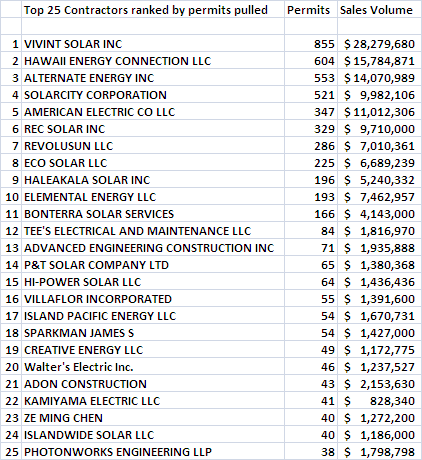Richard Ha writes:
Marco Mangelsdorf, who owns ProVision Solar in Hilo, is one of the most credible commentators I know of in the energy industry. The fact that he owns a solar company has never affected his intelligent analyses. He has no bias but just calls it like it is. I respect his integrity explicitly.
He recently sent me this information about November photovoltaic (PVV) permits, and I got his permission to reprint it here:
[November was the] nineteenth straight month of year-over-year decline. I believe a case can be made that the island’s PV industry may be in a state of terminal decline as far as roof-top PV. It’s hard to see factors that would lead to a sustainable upswing at least in the next several years. With the federal tax credit scheduled to disappear for residential PV as of January 1, 2017 and go down from 30 percent to 10 percent for commercial PV, grid penetration issues and NextEra’s apparent preference for utility-scale PV over distributed generation, the skies seem unlikely to brighten in the near-term for the local PV industry. And forget any immediate relief coming from some magic bullet in the form of energy storage. Ain’t gonna happen no matter how much some commentators predict it along with a mass exodus from the grid. Said pundits have likely never spent any time, let along months or years, living off the grid and the considerable energy, time, resources and conscientiousness that off grid living entails.
November 2014 PV permits—520, a drop of 50 percent over last year. (November 2013 PV permits—1,040.)
January-November 2014—5,914, a drop of 51 percent from the same period last year. (January-November 2013 PV permits—12,163.)
The number one PV permit puller on the island, Vivint Solar, has seen their numbers take a substantial dive in October and November. Their monthly average January-September 2014 = 92 PV permits. In October, they obtained nine permits while they pulled 15 last month.
January-November 2014


